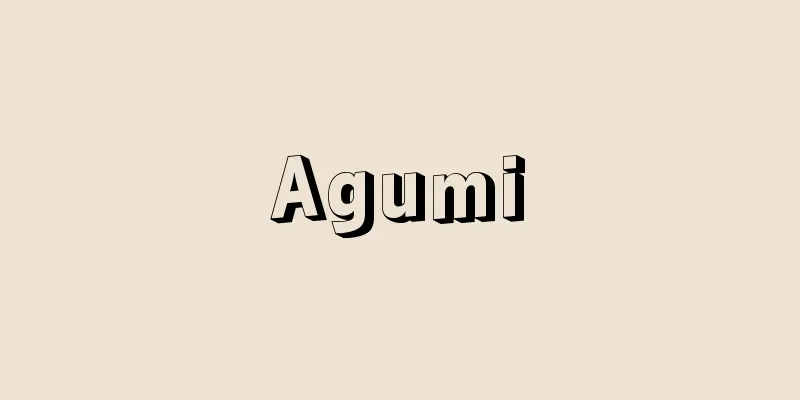Agumi

|
…There is some debate about its relationship with the Chinese koto, but it is reasonable to assume that it was introduced via the Korean Peninsula. The sitting position, 'agura kaki', is also called 'agumi', meaning cross-legged. It is generally believed to have the same origin as the Japanese reading of koto, 'agura', but this is not entirely clear. … *Some of the terminology explanations that mention "Agumi" are listed below. Source | Heibonsha World Encyclopedia 2nd Edition | Information |
|
…中国の胡床との関係については議論があるが,朝鮮半島を経由して伝播されたと考えるのが穏当であろう。なお座法の〈あぐらかき〉は〈あぐみ〉ともいわれ,足組みの意である。一般的には胡床の和訓〈あぐら〉と同一語源から出るとされるものの,必ずしも明らかではない。… ※「あぐみ」について言及している用語解説の一部を掲載しています。 出典|株式会社平凡社世界大百科事典 第2版について | 情報 |
Recommend
Lilium leichtlinii (English spelling) Liliumleichtlinii
…[Tetsuichi Yahara]. … *Some of the terminology t...
California Dolls
…He used Burt Lancaster, Jack Palance, Eddie Albe...
Sanada clan - Sanadauji
A clan of warriors based in Shinano Province (Nag...
Capsaicin
Since ancient times, it has been known that chili ...
Kyozuka - Kyozuka
This is a small fiefdom in which Buddhist scriptu...
Age structure and gender structure
The sex composition (structure) and age compositio...
Louisiana Purchase
In 1803, the United States purchased the vast Fren...
Java [island] - Java
The main island of Indonesia. Also known as Java. ...
Superovulation - Superovulation
… The frequency of multiple births varies dependi...
Song Hui Yao Shi Guo (English translation)
A book that classifies and compiles imperial edict...
tropical year
…In the annual motion of the sun on the celestial...
Aizu lacquerware
Lacquerware is a specialty of Aizuwakamatsu City,...
Three major poems of the four seasons - A look at the seasons
Kabuki dance. Nagauta, Tomimoto, Tokiwazu, Takemot...
Giant Parrot Ananas - Giant Parrot Ananas
…There are about 250 species in tropical America....
Soga no Ishikawamaro
A court official in the Asuka period. He was the g...









